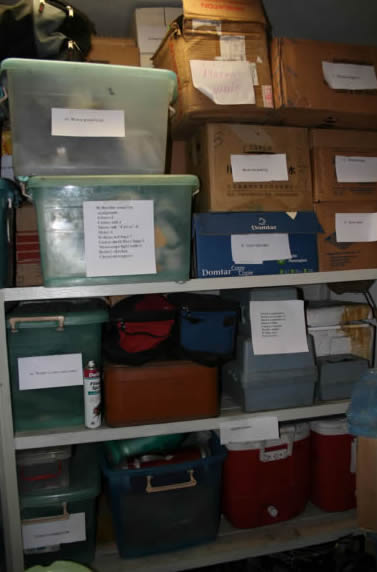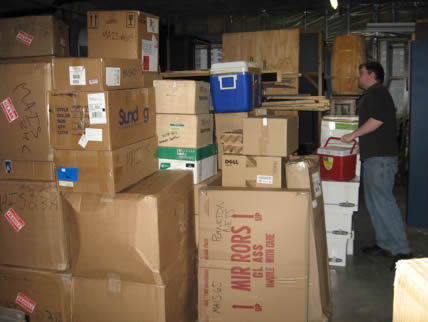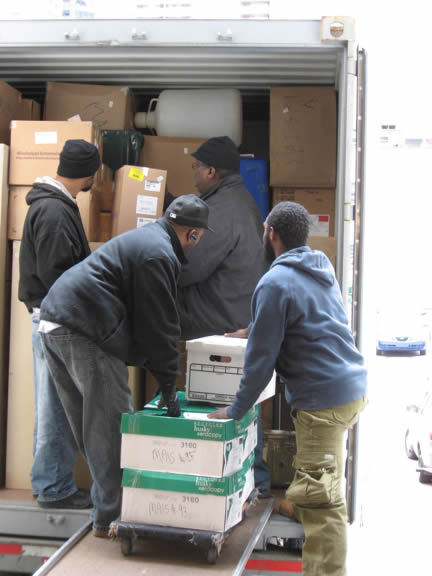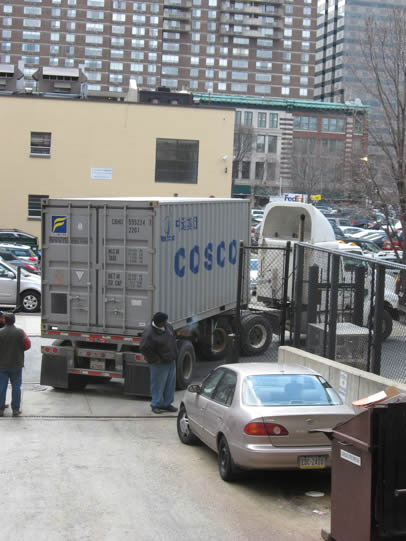| |
|
|
About the Labs
The Mongolian Aquatic Insect Survey maintains three main laboratories for the processing of the Survey’s samples, in addition to the labs the various collaborators work out of. The three labs are located at the Academy of Natural Sciences (Philadelphia, USA), in the Institute of Meteorology and Hydrology (Ulaanbaatar, Mongolia) and at Brigham Young University (Provo, USA). The Philadelphia and Ulaanbaatar labs are under the direction of Jon Gelhaus, the Provo lab under the direction of Riley Nelson.

Space in 2004 to be converted to the MAIS Laboratory in Ulaanbaatar
|
|

MAIS Laboratory Room in Ulaanbaatar (2009)
The Mongolian laboratory was developed during the first phase of MAIS (Selenge River Basin Survey) from an empty set of rooms located in the Institute of Meteorology and Hydrology, Ulaanbaatar, one of MAIS’s partner organizations.
|
| |

Specimen storage cabinets in MAIS Lab in Ulaanbaatar |

Supply storage room in MAIS Lab in Ulaanbaatar |
Sorting of samples is done primarily by young Mongolian researchers (graduate and undergraduate) in Ulaanbaatar, undergraduate students in Philadelphia and undergraduate and graduate students in Provo. This provides these young researchers ample opportunities to train and learn insect identification, curation of collections, databasing and importance of data integrity and access to senior researchers. In addition, the work provides employment for the students while in the university.
In 2008 the laboratory at The Academy of Natural Sciences focused on sorting samples, primarily the backlog from the Selenge Basin sampling. This effort was enhanced through funding for sorters from the President Fund grant from The Academy of Natural Sciences and work-study students from Temple University and University of Pennsylvania. Backlog has been sorted to Order, which for most groups is sufficient for sending to collaborating specialists. In some groups sorting is proceeding to the Family level (e.g. Diptera, Hymenoptera, Hemiptera).
In 2008, the laboratory in Mongolia was staffed in Fall 2007 and spring 2008 through the President Fund grant through The Academy of Natural Sciences. Oyunchuluun Yadamsuren was hired to manage the lab. Two new employees, Bolortsetseg Erdene and Sosoburen Boldbataar were hired for the Hydrobiological Laboratory of IMH (sharing the same space, and using equipment provided by our project) and received training from the manager and during the expedition. Focus was on sorting backlog samples in Mongolia, particularly the four years of Malaise trap samples received from the Hovsgol GEF project (which had ended). A statistical short course was also organized for the laboratory staff. The laboratory staff also facilitated the planning and preparation for the expedition, and arranged the sampling and export permits.
Gelhaus travelled to Mongolia in April 2008 to attend a conference on ecology and as an invited speaker. While there, he reviewed the lab, and met with the director of IMH to discuss the start of MAIS Altai project. He also met with collaborators at National University, and researchers at Mongolian Academy of Sciences and the Natural History Museum. Gelhaus returned to Mongolia in November 2008 to meet with laboratory personnel, work with Oyunchuluun on two crane fly papers, finalize the MOU with IMH, and met with collaborators at NUM and MAS.
In early 2009 MAIS coordinated with Asia Foundation and the PIRE project (University of Pennsylvania) to share a 20 ft shipping container to send equipment and supplies for all three projects in Mongolia. The container was filled with over 120 items for the MAIS lab and Mongolia partner groups, including boxes of new and donated scientific supplies, books, scientific journals, museum specimens storage cabinets, and new computers, microscopes, and other items (over $50,000 worth of new supplies). Shipping took place in late February 2009 from Philadelphia and arrived in Ulaanbaatar in April. The field equipment and supplies were used during the field surveying expedition in June-July 2009. |
|
|
| |
| |

Readying insect specimen cabinets for shipment to Mongolia in 2009 |

Packing and inventorying of boxes of supplies for shipment to Mongolia MAIS laboratory in 2009 |
|
|
|
| |

Packing container with boxes of supplies for
shipment to Mongolia |

Fully loaded shipping container leaving the Academy of
Natural Sciences in Philadelphia for shipment from
New York to Mongolia (via China) in February 2009
|
|
|
|
|
| |
| |
| |
| |
|
|



